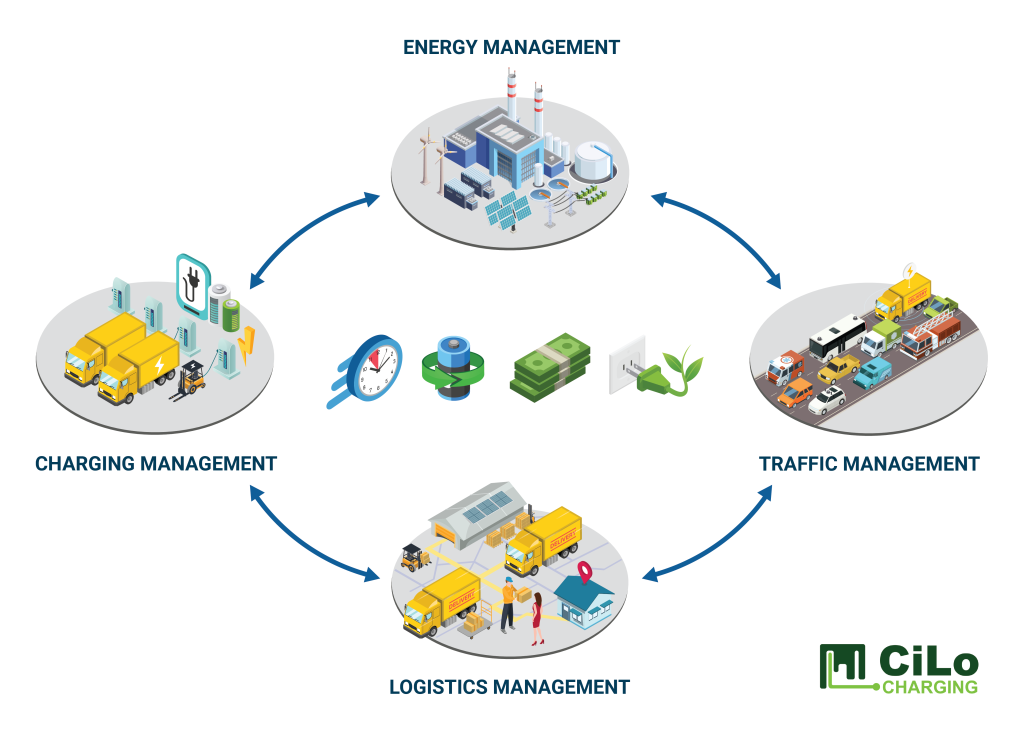CiLoCharging
Optimized integration of charging, logistics, energy and traffic management for the operation of electric vehicles in urban logistics depots.
The CiLoCharging project has set as its goal to enable an optimized, flexible and demand-oriented solution for the use of electric vehicles in the distribution service of a logistics terminal from an economic, technical, and environmental perspective by taking into account the requirements from the domains of energy, logistics, charging infrastructure and mobility management.
In order to be able to adequately take into account the framework conditions typical for general cargo logistics and to ensure the scalability of the fleet terminals in an economical manner, both the loading management must be integrated into the existing logistics processes and a smart energy management system must be provided to integrate electrified logistics terminals into the electrical distribution network.
The project focuses on the development, prototype implementation and evaluation of a corresponding solution both in a simulation and in a field test at the site of a newly built terminal. Leading partners are working in the individual domains together with recognized research institutions to develop an optimized, flexible, and demand-driven solution for requirements-oriented integration and will publicly present it at the end of the project.

For the development of an interdisciplinary, optimal solution for the temporal and organizational processes in a BEV (Battery Electric Vehicle) logistics depot, the specifications from the originally different and separate application areas of logistics, charging process for electrically powered vehicles, energy supply and traffic management must be integrated:
- Logistics: availability of the vehicles at certain times and for certain tours.
- Charging infrastructure:
- Current charging conditions and the resulting ranges.
- Required charging and operating times of the vehicles
- Enabling spontaneous deliveries to be made quickly.
- Power supply:
- Scalable and reliable power supply at the grid connection point of distribution network and logistics depot.
- Bidirectional power flow from and into the distribution network.
- Traffic management: enabling recharging in the city for longer delivery routes.
